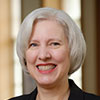This article is more than 5 years old.
My notes on: IPEDS, ebook STLs and video, our vendors, linked data, BIBFRAME, OCLC and Schema.org, ALCTS/LITA Metadata Standards Committee, advocacy
At the ARL Assessment Forum, there was much complaining over the contradiction in instructions with IPEDs collection counts and circulation. Susan and I had the luck of chatting in the hallway with Bob Dugan from UWF, who turned out to be the main official communicator from libraryland with the person for the library section of IPEDs. Bob is also the author of a LibGuide with clarification info from the IPEDs help desk. Bob seems hopeful that changes in definitions for gathering the info (but not the numbers/form) could happen in time for the next cycle. My main specific takeaways from the various speakers:
- the only figures that that will be checked between the current IPEDs survey and the previous survey is total library expenditures (not just collection);
- in spite of the language, the physical circulation part of the survey seems to focus on lending, not borrowing, and may duplicate the ILL info section;
- some libraries are thinking to use COUNTER BR1 and BR2 reports for ebook circulation and footnote which vendors use which type (BR1 or BR2).
ALCTS Technical Services Managers in Academic Libraries Interest Group discussed a wide range of current issues and it was both reassuring and annoying that no matter the library size, public or private, right now everyone has the same problems and no great answers: high cost ebook STLs, difficulties with video, etc. I inferred that our tactic of explaining prices and the options to faculty (e.g. explaining a mediation message about an EBL ebook or that the producer of a desired video is requiring libraries to pay significantly more than the individual pricing advertised) produces greater customer satisfaction than setting broad restrictive rules to stay within budget.
Jeff, Derrik, and I had a good meeting with a domestic vendor regarding ebooks and I discussed some specific needs with a foreign vendor. All felt like we made progress.
Linked data in libraries is for real (and will eventually affect cataloging). I attended several relevant sessions and here is my distillation: LD4L and Vivo, as a part of LD4L, are the best proof-of-concept work I’ve heard about. When starting to learn about linked data, there is no simple explanation; you have to explore it and then try to wrap your brain around it. Try reading the LD4L Use Cases webpages to get an understanding of what can be achieved and try looking at slide #34 in this LD4L slideshow for a visual explanation of how this can help researchers find each other. Here’s a somewhat simple explanation of Vivo from a company that helped start it and now is the “first official DuraSpace Registered Service Provider for VIVO.” OCLC is doing a lot of groundwork for linked data, using Schema.org, and that effort plays into the work being done by LD4L. While OCLC has been using Schema.org, Library of Congress has invested in developing BIBFRAME. I’m looking forward to reading the white paper about compatibility of both models, released just before the conference. The joint ALCTS/LITA Metadata Standards Committee (which replaced MARBI) is naturally interested in this topic and it was discussed at the Committee meeting. The Committee also gathered input from various groups on high level guidelines (or best practices) for metadata that Erik Mitchell, a committee member, originally drafted.
I also attended the meeting of the ALCTS Advocacy Committee, which has a liaison to the ALA Advocacy Coordinating Group. I understand that advocacy will be emphasized in ALA’s forthcoming strategic plan. If you’re not familiar with the Coordinating Group, it has a broader membership than just ALA division representation, but does include ACRL, LITA, and APALA in addition to ALCTS. I believe ZSR is well-represented in these groups and thus has some clear channels for advocacy!

2 Comments on ‘Lauren at ALA Midwinter 2015 (aka Chicago’s 4th Biggest Blizzard)’
I look forward to learning more about the linked data, thanks for all the links! to the data!
Yes, thanks for the reading material – discussions of BIBFRAME have been swirling around for a while so I’m glad to hear more about its applications from you and from Jeff.